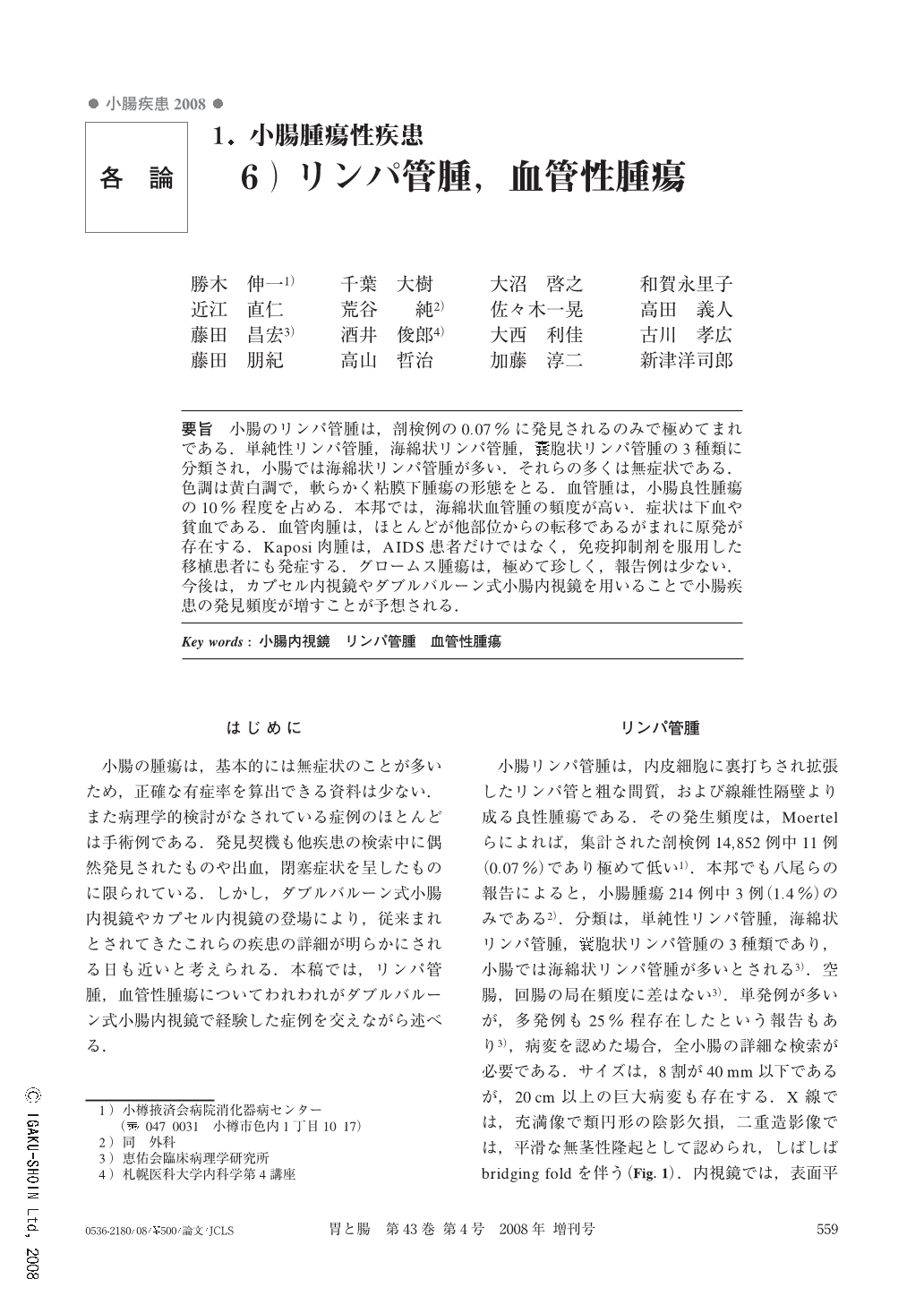Japanese
English
- 有料閲覧
- Abstract 文献概要
- 1ページ目 Look Inside
- 参考文献 Reference
- サイト内被引用 Cited by
要旨 小腸のリンパ管腫は,剖検例の0.07%に発見されるのみで極めてまれである.単純性リンパ管腫,海綿状リンパ管腫,囊胞状リンパ管腫の3種類に分類され,小腸では海綿状リンパ管腫が多い.それらの多くは無症状である.色調は黄白調で,軟らかく粘膜下腫瘍の形態をとる.血管腫は,小腸良性腫瘍の10%程度を占める.本邦では,海綿状血管腫の頻度が高い.症状は下血や貧血である.血管肉腫は,ほとんどが他部位からの転移であるがまれに原発が存在する.Kaposi肉腫は,AIDS患者だけではなく,免疫抑制剤を服用した移植患者にも発症する.グロームス腫瘍は,極めて珍しく,報告例は少ない.今後は,カプセル内視鏡やダブルバルーン式小腸内視鏡を用いることで小腸疾患の発見頻度が増すことが予想される.
Lymphangiomas of the small intestine are discovered in 0.07%of autopsies and are extremely rare. They are classified into three types: the simple lymphangioma, cavernous lymphangioma and cystic lymphangioma, and there are many cavernous lymphangiomas in the small intestine. Lymphangiomas rarely present symptoms. The color is its same as that of the slightly whitish yellow of submucosal tumors. Hemangiomas comprise around 10%of the benign tumors of the small intestine. In Japan, there is a high frequency of cavernous hemangiomas. The symptoms are bloody bowel discharge and anemia. Most of angiosarcomas in the small intestine have metastasized from other parts of the body, and primary angiosarcomas in the small intestine are rare. We can see Kaposi's sarcoma not only in AIDS patients but also in transplant patients who have taken immunity suppressants. The glomus tumor is extremely rare, and there are few case reports. It is expected that, through using the capsule endoscope and double balloon-type endoscopy, the frequency of discovery of small intestine disease will increase.

Copyright © 2008, Igaku-Shoin Ltd. All rights reserved.


